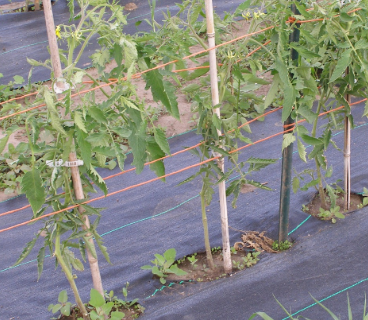Click below to listen to my 2 min. Garden Bite radio show: July pest control for the vegetable garden
As I mentioned on my Garden Bite facebook page, I’ve had some real issues with Japanese beetles in southeastern MN in particular.

July pest control in the veggie garden has been, fingers crossed, so far so good. However, it’s important to scout for pests daily, if possible. Look closely at the leaves, stem, and fruit of the plants. Check out this list from Planet Natural

Look for areas that are discolored, wilted, misshapen, or have holes. It is useful to carry a camera phone and a hand lens, in order to see small insects and capture photos of the problem up close.

Often, a symptom like discolored leaves could be due to a number of causes, and it’s not always something obvious. Consider multiple causes, including the weather, and examine the plants closely.

Sometimes you have to dig up the plant to find what’s wrong with it. I’ll have a link to the U’s diagnostic tool. Master Gardener programs throughout the country have links to ask them online what’s wrong with a plant. Providing them with as much information as possible is very important. Pictures too!
For tomato diseases… well, there could be a few. Again, I’m going to link you to a lot more in-depth information but discolored leaves are at the top of the list. Pinch off leaves with leaf spots and bury them in the compost pile. It is ok to remove up to 1/3rd of the plants leaves. This should not be a problem if you catch the disease early but if the leaf spot disease has spread throughout the plant, remove only the worst infected leaves. Do not remove more than 1/3rd of the plants leaves.

Many gardeners will remove the lower third of the leaves on every plant regardless. This makes it harder for plant pathogens in the soil to get splashed on to the lower leaves. It also improves air circulation and allows the leaves to dry quicker.
Fungi and bacteria need moisture on the leaf surface to start a new infection so keeping leaves dry is important. Mulching will also help.
